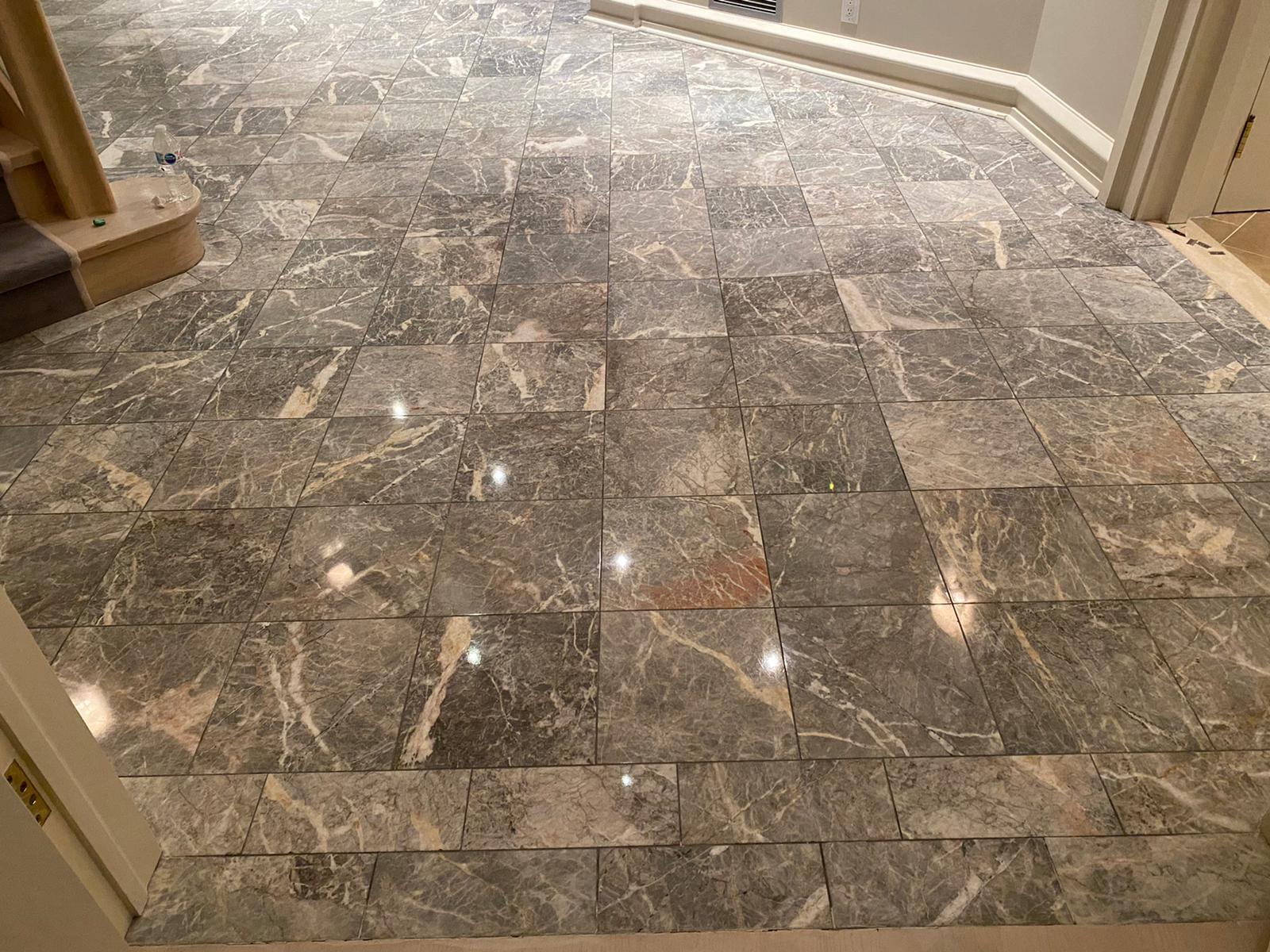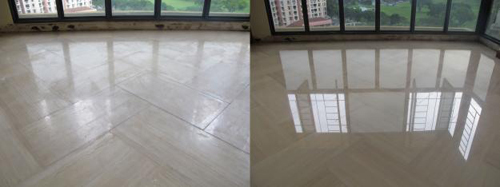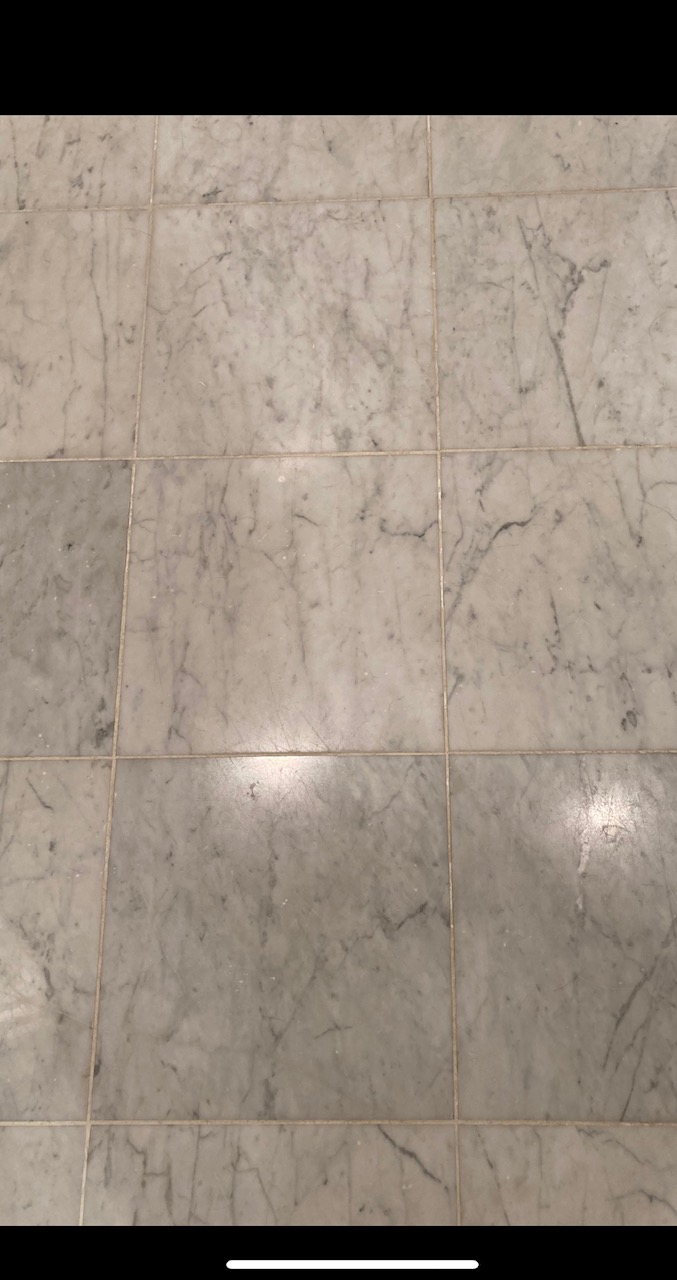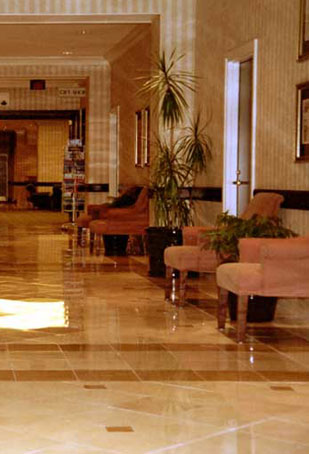Benefits of Marble Floor Restoration
Restoring marble floors offers numerous benefits, not only enhancing the appearance but also improving the durability and lifespan of the flooring. Here’s why marble floor restoration is a worthwhile investment:
- Enhanced Aesthetic Appeal Over time, marble floors can lose their shine and develop scratches and stains. Restoration brings back the original luster and beauty of the marble, making the floors look brand new. The enhanced aesthetic appeal can transform the look of any room, adding a touch of sophistication and elegance.
- Increased Durability Restoration involves removing scratches, stains, and etches, which can weaken the surface of the marble over time. By addressing these imperfections, restoration increases the durability of the marble, making it more resistant to future damage. This ensures that your marble floors remain in excellent condition for years to come.
- Cost-Effective Replacing marble floors can be expensive and time-consuming. Restoration is a cost-effective alternative that rejuvenates the existing marble without the need for replacement. It saves both time and money while achieving the desired results.
- Improved Hygiene Marble floors with scratches and stains can harbor dirt and bacteria, making them harder to clean. Restoration removes these imperfections, creating a smooth and hygienic surface that is easier to maintain. A restored marble floor contributes to a healthier indoor environment.
- Increased Property Value Well-maintained and restored marble floors add value to your property. They create a positive impression and enhance the overall appeal of your home. Whether you plan to sell or simply want to enjoy the benefits of beautiful floors, restoration is a valuable investment.
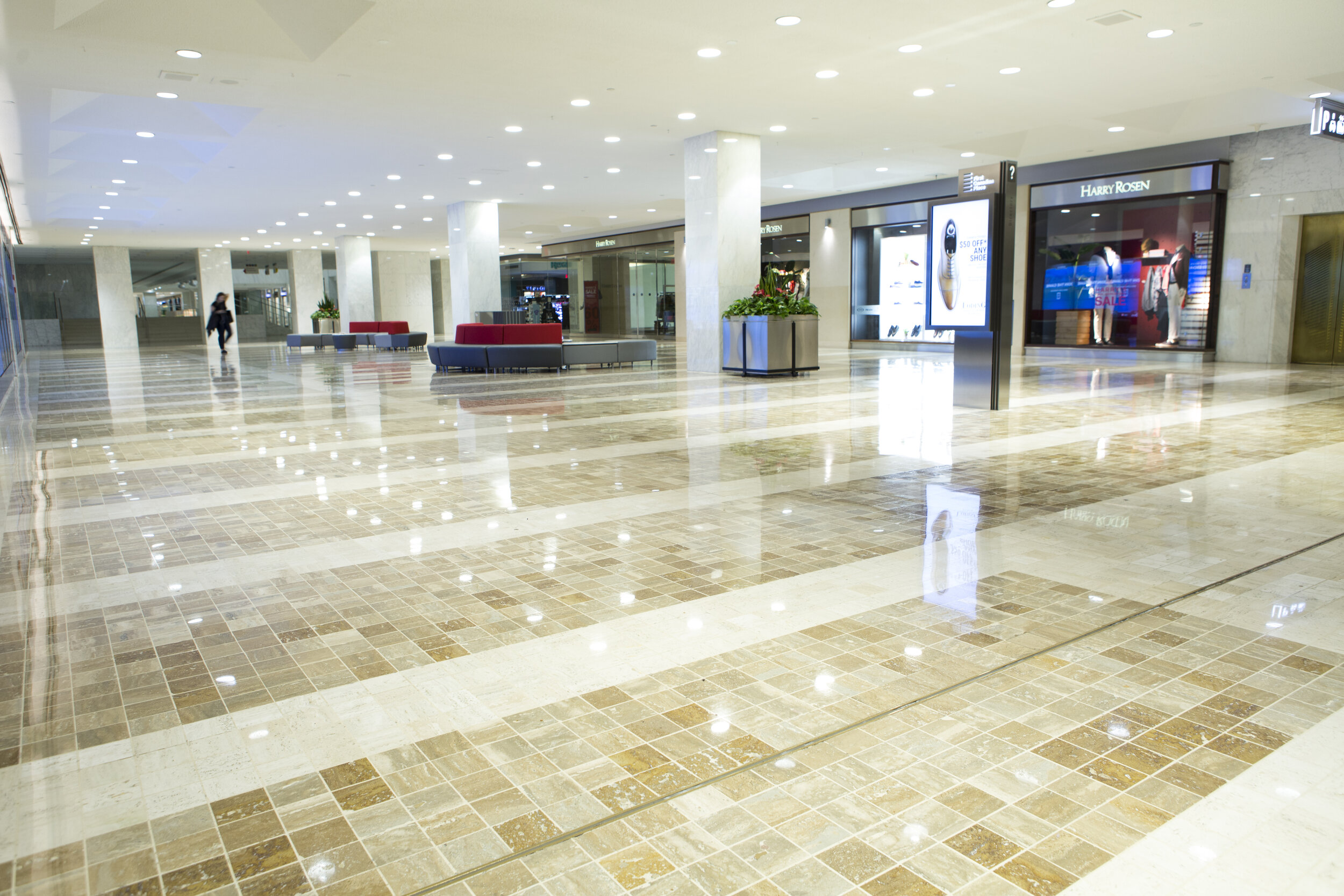
Preparation Steps for Marble Floor Restoration
Proper preparation is crucial for a successful marble floor restoration. Here are the essential steps to prepare your marble floors for restoration:
Thorough Cleaning Begin by thoroughly cleaning the marble floors to remove dirt, dust, and debris. Use a pH-neutral cleaner specifically designed for marble surfaces. Avoid using acidic or abrasive cleaners that can damage the marble. A clean surface ensures that the restoration process is effective and achieves the best results.
Assessing the Damage Carefully inspect the marble floors to identify all areas of damage. Look for scratches, stains, etches, and dull spots. Assess the severity of each issue to determine the appropriate restoration techniques. Documenting the damage helps prioritize the restoration process and ensures that no areas are overlooked.
Protecting Surrounding Areas Protect surrounding areas, such as walls and furniture, from the restoration process. Use painter’s tape and plastic sheeting to cover and protect these areas. This prevents accidental damage and keeps the surrounding space clean during the restoration.
Gathering Tools and Materials Gather all the necessary tools and materials for the restoration process. This may include diamond polishing pads, a variable-speed polisher, marble polishing powder, a vacuum, a mop, a bucket, and protective gear. Having everything on hand ensures a smooth and efficient restoration process.
Testing Restoration Products Before applying any restoration products to the entire floor, test them on a small, inconspicuous area. This helps determine how the products will react with the marble and ensures that they achieve the desired results. Adjust the products or techniques as needed based on the test results.
Restoration Techniques for Marble Floors
There are several techniques used to restore marble floors, each addressing specific issues such as scratches, stains, and dullness. Here are some common restoration techniques:
Grinding Grinding, also known as honing, involves using diamond abrasive pads to remove surface imperfections such as scratches, stains, and etches. The process starts with coarse pads and gradually progresses to finer grits, creating a smooth and even surface. Grinding is an effective technique for addressing severe damage and preparing the marble for polishing.
Polishing Polishing is the process of using fine diamond abrasive pads to create a glossy and reflective finish on the marble. Polishing enhances the natural beauty of the marble and restores its shine. A variable-speed polisher is used to apply the polishing pads, and the process is typically done in multiple stages, gradually increasing the fineness of the pads.
Crystallization Crystallization is a chemical process that creates a hard, glass-like surface on the marble. A crystallization agent is applied to the marble and buffed using a steel wool pad. This process enhances the shine and durability of the marble, making it more resistant to scratches and stains. Crystallization is an effective technique for maintaining the polished appearance of marble floors.
Stain Removal Removing stains from marble floors requires specific techniques depending on the type of stain. For organic stains such as coffee or wine, a poultice made of baking soda and water can be applied to draw out the stain. For oil-based stains, a poultice made of baking soda and acetone is effective. It’s important to follow the manufacturer’s instructions for stain removal products to avoid damaging the marble.
Etch Removal Etches are dull spots caused by acidic substances reacting with the marble. Removing etches involves using a marble polishing powder and a damp cloth to gently buff the affected area. The polishing powder restores the shine and removes the dull spots, blending them with the surrounding marble. For severe etching, professional restoration may be required.

Sealing and Finishing Marble Floors
After restoring the marble floors, sealing and finishing are essential steps to protect the surface and enhance its appearance. Here’s how to seal and finish your restored marble floors:
Choosing the Right Sealer Select a high-quality marble sealer that is compatible with your specific type of marble. There are different types of sealers, including penetrating sealers and topical sealers. Penetrating sealers absorb into the marble and provide long-lasting protection, while topical sealers create a protective layer on the surface. Choose a sealer that meets your needs and preferences.
Applying the Sealer Before applying the sealer, ensure that the marble floor is clean and completely dry. Apply the sealer according to the manufacturer’s instructions, using a clean cloth or applicator pad. Work in small sections to ensure even coverage and avoid pooling. Allow the sealer to penetrate the marble for the recommended time, then wipe off any excess with a clean cloth.
Buffing the Floor After the sealer has been applied and dried, buff the floor to enhance its shine and create a smooth finish. Use a variable-speed polisher with a soft buffing pad to achieve the best results. Buffing not only enhances the appearance of the marble but also helps to evenly distribute the sealer and improve its effectiveness.
Finishing Touches For an added layer of protection and shine, consider applying a marble polish or conditioner. These products are specifically designed to enhance the luster of marble and provide additional protection against stains and etches. Follow the manufacturer’s instructions for application and maintenance.
Regular Maintenance To keep the sealed and finished marble floors looking their best, establish a regular maintenance routine. This includes regular cleaning, avoiding harsh chemicals, and promptly addressing spills and stains. Periodically reapply the sealer as recommended by the manufacturer to maintain the protective barrier.
Maintenance Tips for Restored Marble Floors
Proper maintenance is essential to preserve the beauty and durability of restored marble floors. Here are some tips to help you maintain your restored marble floors:
Regular Cleaning Sweep or vacuum the marble floors regularly to remove dirt, dust, and debris. Use a damp mop with a pH-neutral cleaner specifically designed for marble surfaces. Avoid using acidic or abrasive cleaners that can damage the marble and strip the sealer.
Immediate Spill Management Wipe up spills immediately to prevent stains and etches. Use a clean, dry cloth to blot the spill and avoid rubbing, as this can spread the liquid and cause further damage. For sticky or stubborn spills, use a damp cloth and a marble cleaner.
Protective Measures Place mats or rugs in high-traffic areas and entryways to protect the marble from dirt and grit. Use furniture pads under the legs of chairs, tables, and other furniture to prevent scratches and dents. Avoid placing heavy or sharp objects directly on the marble floor.
Periodic Sealing Reapply the marble sealer periodically to maintain the protective barrier. Follow the manufacturer’s recommendations for sealing frequency, which may vary depending on the type of sealer and the level of use. Regular sealing helps prevent stains and prolongs the life of the marble.
Professional Maintenance Consider scheduling professional maintenance for your marble floors every few years. Professional restoration services can address any wear and tear, ensuring that your marble floors remain in excellent condition. They can also provide specialized treatments, such as grinding and polishing, to keep the marble looking its best.
Stone renovation Marble polishing toronto marble floor polishing
Marble Polishing Burlington (416) 894-0379 Brite Shine
Church Restoration: Custom Mosaics – Marble Trend Marble
White Marble Floor Restoration u2013 NOVA Stone Care
Cleaning marble floors, marble restoration
MARBLE FLOOR REFINISHING AND MARBLE CLEANING u0026 SEALING
Bring Your Floors Back to Life with Affordable Marble Restoration Designing Spaces
Related Posts:


